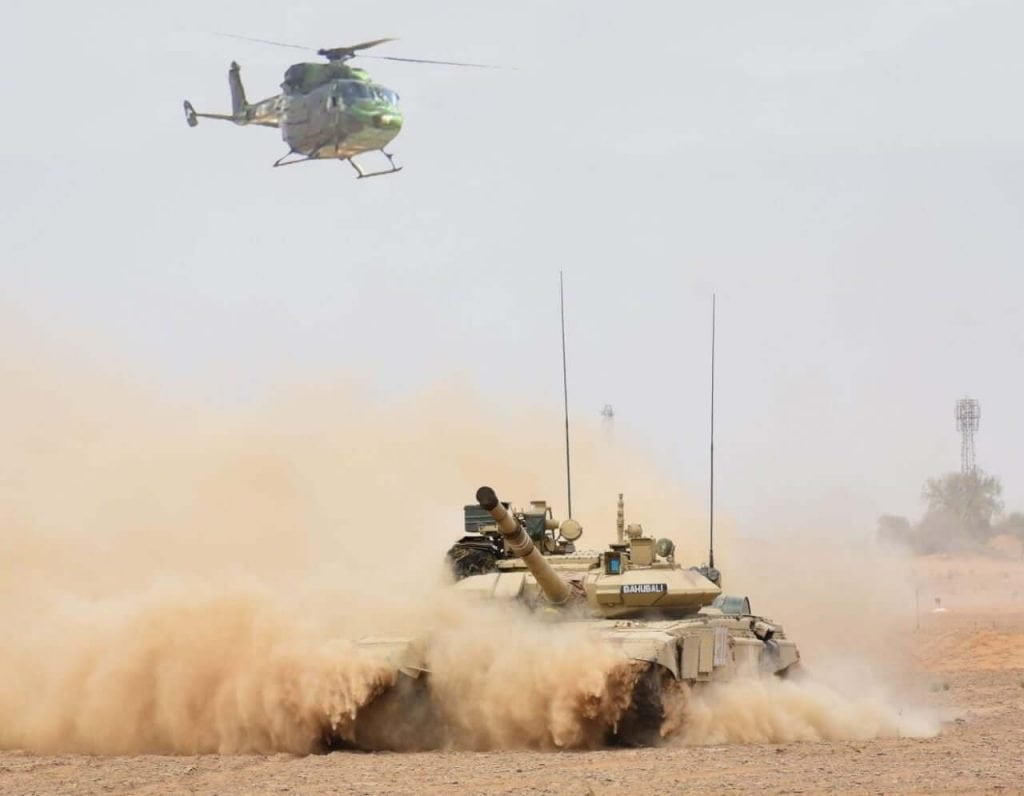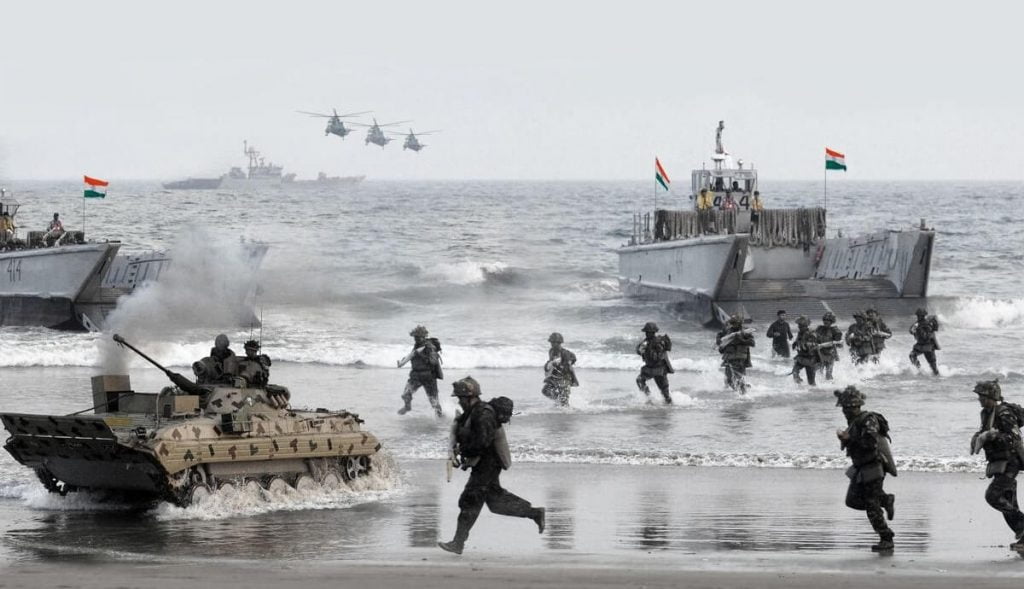
In the last year since the Galwan incident, the Government of India under the leadership of our Prime Minister Narender Modi has shown a great deal of intent to deal with the modernisation of the armed forces. There was an announcement of a number of defence reforms to resurrect the long-felt void in defence modernisation. Over the years this issue remained an enigma in spite of every successive Government making tall promises to make a difference. Unfortunately, except for scams nothing else happened. It was therefore very heartening to see that with the recent announcements of a slew of defence reforms, the foremost being the Corporatisation of the Ordnance Factory Board to resuscitate the fledging Ordnance factories.
In recent times the dimensions of warfare have changed considerably and therefore defence policy perspectives have to take into account our responses to a short of a war situation as well as proxy wars. It, therefore, becomes imperative that the arming and modernisation of forces with the right capability and technology cannot be delayed any longer. With this in view, Atma Nirbharta in defence will have to address two important areas i.e. maintenance of existing assets and acquisition of new generation weapon systems and platforms such as submarines, ships, torpedoes, aircraft, tanks, armour fighting vehicles and so on.
The country cannot have too many dependencies and indigenous production has to be the vision of India. A 300 billion US dollars opportunity in defence is knocking on our doors and we need to embrace this opportunity before it becomes too late. We need to therefore establish a “Production Eco-System”, with ease of doing business the utmost concern. The keys areas which would need our emphasis would relate to the design and development of technology and utilisation of all our national resources and capability in terms of the public sector, private sector, academia, industry and startups.

We need to foremost understand the state of industrialisation in our country. Our greatest weakness has been the lack of overall perspective towards defence manufacturing. We have been giving undue importance to institutions such as the Defence Research and Development Organisation (DRDO), the premier R&D agency of the Ministry of Defence (MoD) and the Director-General of Ordnance Factories(DGOF) to cater to our defence requirements. These organisations do not have a laid down road map and decisions are taken in a compartmentalised environment bereft of the involvement of stakeholders. Is it not a matter of surprise that the Indian Army accounts for more than 80% of its orders on OFB and still doesn’t have any member in the advisory board of the Ordnance Factory Board (OFB). The absence of stakeholders in the decision-making process has a catastrophic effect on defence manufacturing and procurement. The Armed Forces are interested in getting the equipment in the shortest time frame, whereas these organisations have scant respect for timelines and the sanctioned budgets.
The impact on the Indian economy has been immense. India’s real-time GDP decelerated to its lowest in six months to 4.5%. Its core sector contracted by 6.5% in March 2021. In the overall analysis, the three major contributors of GDP- Private Consumption, Investment and External trade could take a hit.
Our Performance Manufacturing Index (PMI) went down to 38% in March 2020, hopefully it is recovering now to 50.7%. Index for industrial production declined to 118.10 (contraction by 11.10%) in July 2020 with the industrial growth contracting by 29.2% as compared to 3.5% rise in the same period last year. The contribution of our manufacturing sector to the GDP has been around 24%.
There are several reasons why India lags in the manufacturing sector. India FDI inflows stood at 49 billion US dollars in 2019 as compared to China’s 140 billion. India’s bureaucratic setup however continues to mire foreign companies due to weak legal and regulatory systems. In addition land, labour and law and order largely fall under the State List, which foreign companies’ see as further hurdles as each state may use different systems of approval. India also continues to see a lack of investment in connectivity both in terms of physical and digital infrastructure.

Today, the share of domestic procurement in defence is about 60%. During the last four years, procurement has doubled from 70000 cr to 1, 40,000 cr. The Defence Product Export Promotion Policy 2020 has spelt out the roadmap. India’s defence exports during 2015-20 grew at a cumulative annual growth rate (CAGR) of 35 per cent — from around Rs 2,000 crore to Rs 9,000 crore. The target which was laid for the year 2020-21 was 15000 cr but only 5700 cr was achieved. The Ministry of Defence (MoD) has set an ambitious defence exports target of Rs 35,000 crore by 2025. Exports will need to grow at a CAGR of over 40% to reach Rs 35000 cr.
The country’s defence exports push is part of its effort to become part of the global defence value chain and one of the leading countries in the defence sector. India was ranked at the 23rd position as a global arms exporter by SIPRI in 2020.
The MoD has undertaken key institutional changes in recent years to facilitate exports. The creation of the Export Promotion Cell (EPC) in the Department of Defence Production (DDP) is one significant institutional step. Measures like the Defence Attache’s (DAs) scheme is another, as part of which financial support to undertaking outreach activities and market studies are provided to DAs.
There will also be a concern with regard to strategic partnerships and the involvement of the private sector. Typical defence technologies are not patented nor does the DRDO/SHQ have full knowledge of designs of military equipment developed by other countries. Therefore to arrive at a final decision to acquire a weapon system would be a challenge.
Another issue is related to the indigenous content, which cannot be met for all types of equipment. There is more relevant in the case of critical aerospace items in which the local capability stands at the barest minimum and achieving even 25 per cent IC will be a difficult task at the present pace of India’s defence industrial development. It may be noted that HAL depends upon foreign sources to the extent of 60 to 70 per cent of input materials.
India’s defence modernisation, therefore, is likely to undergo a paradigm change. The present trends have already started showing significant results. According to the World Bank’s ease of doing business ranking 2020, India jumped 79 positions from 142 in 2014 to 63 in 2019. India would have to capture a place among the top 50 in the ranking to become a global player in manufacturing. Large foreign OEMs are now coming to India. Airbus has agreed to be a part of the Naval Utility Helicopter space along with Mahindra. The strategic partnership model will result in high-end platforms being manufactured in the country.
With this backdrop of our present state of indigenisation, it was great news when the Govt announced the proposed structure for the Corporatisation of OFB. As per the press release issued by the Govt on 16 June 2021, the Corporatisation of OFB will improve its autonomy, accountability and efficiency in Ordnance Supplies. An Empowered Group of Ministers (EGoM) has been constituted under the Chairmanship of Raksha Mantri to oversee and guide the entire process of the corporatisation of OFB, including transition support and redeployment plan of employees while safeguarding their wages and retirement benefits.
We have today 41 Ordnance factories. Headquartered in Kolkata, the OFB is a conglomerate of 41 factories, nine training institutes, three regional marketing centres and five regional controllers of safety. At present, these factories are divided under five clusters or operating groups and they produce a range of arms, ammunition, armoured and infantry combat vehicles, clothing items and others such as parachutes for the services. These will be subsumed as seven 100 per cent government-owned corporate entities, registered under the Companies Act 2013. Once implemented, the OFB, the establishment of which was accepted by the British in 1775, will cease to exist.
The ammunition and explosives group would be mainly engaged in producing ammunition of various calibre and explosives, with huge potential to grow exponentially and give an impetus to Make in India

Similarly, the vehicles group would mainly engage in producing defence mobility and combat vehicles such as tanks, trawls, infantry and mine protected vehicles.
The weapons and equipment group would be mainly engaged in production of small arms, medium and large calibre guns and other weapon systems and is expected to increase its share in the domestic market through meeting the demand as well as product diversification.
The troop comfort items group, the ancillary group, the optoelectronics group and the parachute group constituted the entire structure.
The above structure would also help in overcoming various shortcomings in the existing system of the OFB by eliminating inefficient supply chains and provide these companies incentive to become competitive and exploring new opportunities in the market, including exports, the official added.
As seems evident, the Ordnance factories will now function akin to Defence PSUs. The major areas where they would be required to bring about a change would be in the aspects of decision making, accountability, quality control, pricing and adoption of a niche technology.
Over a period of time the non-productive units will be required to be phased out and in house research and development will have to be allocated the necessary budget and pursued vigorously. They must look to join hands with the private sector in the form of Joint Ventures (JVs) and reduce their man-hour rates (MHR). Presently, they will have the luxury of getting their working capital allocation from the Govt for the next five years but thereafter, they would have to work out their corporate model and be able to self-sustain themselves after the hand holding period ceases.

